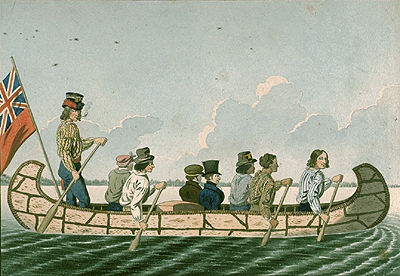The Hudson’s Bay Company (HBC) was founded by King Charles II in 1670 and that makes it the oldest commercial company in the English-speaking world. For centuries the HBC controlled the fur trade throughout much of British-controlled North America, in an area known as Rupert’s Land, undertaking early exploration and functioning as the de facto government in many areas of the continent.

Fur trapping and exploration in Rupert’s Land in the 1600s must have been a high risk job to say the least. The trappers would have to survive on their own in the wilderness so having the right supplies in the correct amounts was literally a matter of life and death. To minimise this risk the trappers developed a technique known as the ‘Hudson Bay Start’.
The Hudson Bay Start was a test. A test to make sure the trappers had the right equipment before they headed off into the wilderness. They would pack up as if they were going to leave for the season but only canoe a short distance and camp overnight to make sure they had neither forgotten anything, nor taken too much. They would then return home, correct any mistakes, before heading out for real. Clearly this approach didn’t come for free – the trapping season was quite short – so while it reduced risk it did present an opportunity cost and might be seen as having an impact on their shipping schedule. A similar approach can be applied to large software projects.
Large scale software projects are high risk. The bigger the project the higher the risk, both in terms of impact (if it goes wrong the company will lose more money) and the rate of occurrence because big projects are more complex and are more likely to contain unk-unks. The idea of a Hudson Bay start is to expose some of those unk-unks and assumptions and therfore reduce some of your project risks, as Jerry Weinberg explains:
We take a trivial problem – really trivial like putting HELLO WORLD on a single screen, and run it through the entire development process – tools, people, documents, test plans, testing, or whatever they’re planning to use. It’s amazing the things that shake out in an hour or two. What’s even more amazing is how many clients are reluctant to do this – “It’s a waste of time; we’ve got an ambitious five-year project and we can’t spare a half day on an exercise.”
This is similar to spikes and tracer bullets in agile methodologies like Scrum. Except with tracer bullets you are working on a narrow implementation of a larger user story to help fine tune what needs to be built, helping you aim more accurately; and with spikes you are building quick and dirty throw away code to gain knowledge. Whereas with a Hudson Bay start you’re less interested in the actual product and more interested in making sure the development and deployment process works.